EHS Executive
20+ EHS Executive Interview Questions and Answers
Asked in Continental Carbon Eco Technology

Q. Have you handled legal documents before?
Handling legal documents requires attention to detail, understanding of regulations, and effective communication skills.
Familiarity with legal terminology is crucial; for example, understanding terms like 'liability' and 'indemnity'.
Attention to detail is essential; a single error in a contract can lead to significant legal issues.
Effective communication with legal teams ensures clarity in document requirements and compliance.
Experience in reviewing and drafting contracts, su...read more

Asked in Panasonic Life Solutions India

Q. Briefing of reporting? Core competencies in EHS? Technical in IS codes? Construction? Risk Assessment, Aspect & Impact, ISO 14001, ISO 45001,
Core competencies in EHS, technical knowledge in IS codes, construction, risk assessment, and ISO standards.
Strong understanding of EHS regulations and compliance requirements
Expertise in interpreting and applying IS codes for safety and construction
Experience in managing EHS programs for construction projects
Proficiency in conducting risk assessments and identifying potential hazards
Knowledge of ISO 14001 and ISO 45001 standards for environmental and occupational health and ...read more
EHS Executive Interview Questions and Answers for Freshers

Asked in Talwandi Sabo Power

Q. What is Risk and Risk assessment?
Risk is the possibility of harm or loss. Risk assessment is the process of identifying, analyzing, and evaluating potential risks.
Risk is inherent in any activity or situation
Risk assessment involves identifying potential hazards and evaluating the likelihood and severity of harm
Risk assessment helps in developing strategies to mitigate or manage risks
Examples of risk assessment include workplace safety assessments, environmental impact assessments, and financial risk assessm...read more

Asked in Tirupati Life Sciences

Q. Which section of the Factory Act of 1948 covers the Safety Committee?
Safety committees are addressed under Section 41 of the Factories Act, 1948, focusing on worker safety and health.
Section 41 mandates the formation of safety committees in factories with a certain number of workers.
These committees are responsible for promoting safety measures and addressing health concerns.
For example, a factory with over 250 workers must have a safety committee to ensure compliance with safety regulations.
The committee typically includes representatives fro...read more

Asked in R.V.R. PROJECTS

Q. What is hazard identification and risk assessment?
Hazard identification risk assessment is a process of identifying potential hazards and evaluating the associated risks.
Identify potential hazards in the workplace
Evaluate the risks associated with each hazard
Develop strategies to control or eliminate the hazards
Regularly review and update the risk assessment
Examples include chemical exposure, electrical hazards, and ergonomic risks

Asked in Sun Pharmaceutical Industries

Q. What are the basic and routine roles of an Environment Engineer in Sun Pharmaceutical Industries?
The basic role of an Environmental Engineer at Sun Pharmaceuticals Industries involves ensuring compliance with environmental regulations, implementing sustainable practices, and managing environmental risks.
Ensuring compliance with environmental regulations and standards
Implementing sustainable practices to minimize environmental impact
Managing environmental risks and conducting risk assessments
Developing and implementing environmental management systems
Monitoring and analyz...read more
EHS Executive Jobs
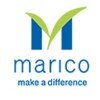
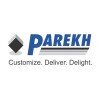
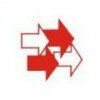

Asked in Schneider Electric

Q. What are the different types of risks?
Types of risk include financial, operational, strategic, compliance, reputational, and physical.
Financial risk involves potential losses due to market fluctuations, credit defaults, or other financial factors.
Operational risk arises from internal processes, systems, or human error.
Strategic risk is the potential for losses due to changes in business strategy or external factors.
Compliance risk involves failure to comply with laws, regulations, or industry standards.
Reputation...read more
Asked in Pavilion Infrastructure

Q. How can you develop a safety culture?
Developing a safety culture requires leadership commitment, employee involvement, continuous improvement, and effective communication.
Leadership commitment is crucial to set the tone for safety culture.
Employee involvement in safety programs and decision-making fosters ownership and accountability.
Continuous improvement through regular safety audits, hazard assessments, and training helps identify and mitigate risks.
Effective communication of safety policies, procedures, and ...read more
Share interview questions and help millions of jobseekers 🌟


Asked in UPL

Q. What are safety management systems?
Safety management systems are a set of policies, procedures, and practices designed to manage workplace safety and health.
Safety management systems are proactive and preventive in nature
They involve identifying hazards, assessing risks, and implementing controls
They also involve training employees, monitoring performance, and continuous improvement
Examples include OSHA's Voluntary Protection Program (VPP) and ISO 45001 standard
Effective safety management systems can reduce in...read more

Asked in L&T Construction

Q. What is the work permit system?
A system used to control hazardous work by ensuring that proper procedures are followed before work begins.
Work permit system is a written procedure that outlines the steps to be taken before starting a hazardous job.
It ensures that all necessary precautions are taken to prevent accidents and injuries.
It involves identifying the hazards, assessing the risks, and implementing control measures.
Examples include hot work permits, confined space permits, and electrical work permit...read more

Asked in Schneider Electric

Q. Types of fire and fire extinguisher
Different types of fires require different types of fire extinguishers.
Class A fires involve ordinary combustibles such as wood, paper, or cloth and can be extinguished with water or foam extinguishers.
Class B fires involve flammable liquids such as gasoline or oil and require a dry chemical or carbon dioxide extinguisher.
Class C fires involve electrical equipment and require a non-conductive extinguisher such as carbon dioxide or dry chemical.
Class D fires involve combustibl...read more

Asked in Siemens Energy

Q. How is the EHS management system implemented at the site?
The EHS management system is implemented at the site through a combination of policies, procedures, training, audits, and continuous improvement efforts.
Establishing EHS policies and procedures to outline expectations and requirements
Providing EHS training to employees to ensure understanding and compliance
Conducting regular audits and inspections to identify areas for improvement
Implementing corrective actions to address any non-compliance or hazards
Continuously improving th...read more

Asked in Siemens Energy

Q. How is the EHS policy being implemented at the site?
The EHS policy is implemented at the site through regular training, audits, inspections, and communication with employees.
Regular training sessions conducted to educate employees on EHS policies and procedures
Audits and inspections carried out to ensure compliance with EHS regulations
Open communication channels established for employees to report any safety concerns or incidents
Safety committees formed to monitor and improve EHS performance
Corrective actions taken promptly in...read more

Asked in Schneider Electric

Q. How do you reduce risk?
Risk can be reduced by identifying potential hazards, implementing controls, and regularly reviewing and updating safety procedures.
Conduct regular risk assessments to identify potential hazards
Implement controls such as safety protocols, training, and equipment
Regularly review and update safety procedures to ensure effectiveness
Encourage employee involvement in safety initiatives
Provide ongoing safety training and education
Utilize technology and automation to reduce human er...read more

Asked in Sun Pharmaceutical Industries

Q. What is the working flow of a multiple effect evaporator plant?
A multiple effect evaporator plant works by using the vapor from one effect to heat the next effect, increasing efficiency.
Vapor from the first effect is used to heat the second effect, and so on for subsequent effects
Each effect operates at a lower pressure and temperature than the previous effect
This process allows for the reuse of heat and increases overall efficiency
Asked in Pavilion Infrastructure

Q. Why is it important to follow work permit systems?
Work permit systems ensure safety and compliance in hazardous work environments.
Work permit systems help identify potential hazards and ensure necessary precautions are taken before work begins.
They provide a standardized process for assessing risks and implementing controls.
Following work permit systems can prevent accidents, injuries, and even fatalities.
Examples of industries that commonly use work permit systems include construction, oil and gas, and manufacturing.
Work pe...read more

Asked in Nagata India

Q. Fire system installation as per NBC
Fire system installation as per NBC
NBC stands for National Building Code of India
Fire system installation must comply with NBC guidelines
NBC guidelines include requirements for fire detection, alarm, and suppression systems
Installation must be done by certified professionals
Regular maintenance and testing is required to ensure system effectiveness

Asked in Theobroma Foods

Q. How do you perform a mock drill?
Mock drills are simulated exercises to test emergency response procedures and preparedness.
Plan the mock drill in advance, including objectives, scenario, participants, and evaluation criteria.
Communicate the details of the mock drill to all participants to ensure everyone is aware and prepared.
Conduct the mock drill as realistically as possible, simulating the emergency scenario and response actions.
Evaluate the performance of participants during the mock drill to identify s...read more
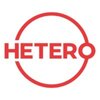
Asked in Hetero

Q. What is the MIE value?
MIE value stands for Minimum Ignition Energy value.
MIE value is the minimum energy required to ignite a flammable substance.
It is an important parameter in determining the safety of handling and storage of flammable materials.
MIE value is measured in millijoules (mJ) or microjoules (μJ).
Lower MIE values indicate higher risk of ignition.
For example, gasoline has an MIE value of around 0.2 mJ, while propane has an MIE value of around 0.3 mJ.

Asked in Sun Pharmaceutical Industries

Q. Are there any advanced systems available?
Yes, there are advanced EHS systems that enhance safety, compliance, and efficiency in environmental health and safety management.
Integrated software solutions like Envirosuite for real-time environmental monitoring.
Mobile applications for incident reporting and safety audits, such as iAuditor.
Data analytics platforms that predict safety risks using machine learning, like Predictive Safety.
Cloud-based management systems for compliance tracking, such as Sphera.

Asked in Omega Healthcare

Q. What are your daily activities?
My daily activities as an Executive-EHS involve strategic planning, compliance monitoring, and team leadership to ensure workplace safety.
Conduct daily safety inspections to identify potential hazards.
Review and update EHS policies to ensure compliance with regulations.
Lead training sessions for employees on safety protocols.
Analyze incident reports to identify trends and implement corrective actions.
Collaborate with cross-functional teams to promote a culture of safety.

Asked in Tata Power

Q. Types of sprinkler
Types of sprinklers include upright, pendant, sidewall, and concealed.
Upright sprinklers are installed at the top of a pipe and spray water upwards.
Pendant sprinklers hang down from the ceiling and spray water downwards.
Sidewall sprinklers are mounted on walls and spray water horizontally.
Concealed sprinklers are hidden behind a cover plate and activate when the temperature rises.

Asked in Samkwang India Electronic

Q. Is the CTC of 25000 acceptable?
The accepted CTC is 25000.
Negotiate for a higher CTC based on your qualifications and experience.
Consider other benefits such as insurance, bonuses, or perks in addition to the base salary.
Research industry standards and average salaries for similar positions to support your negotiation.
Highlight your skills and achievements that justify a higher CTC.
Be prepared to discuss and justify your salary expectations during the interview.
Interview Experiences of Popular Companies

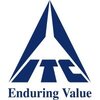
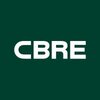

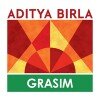



Reviews
Interviews
Salaries
Users
















